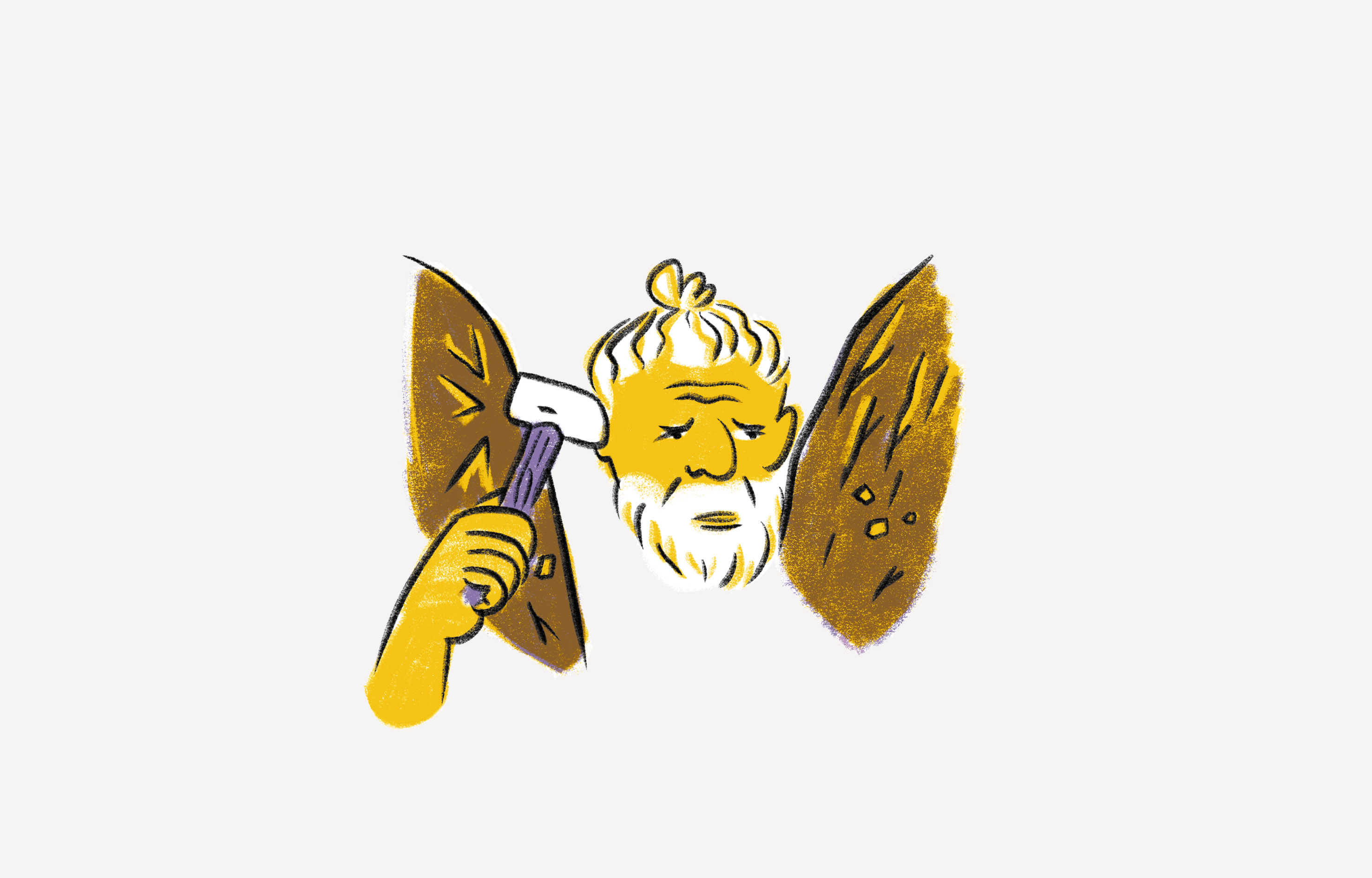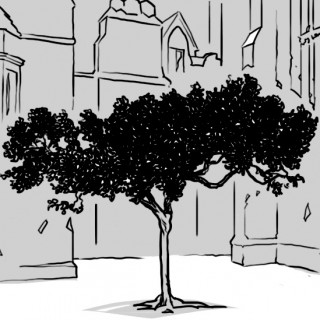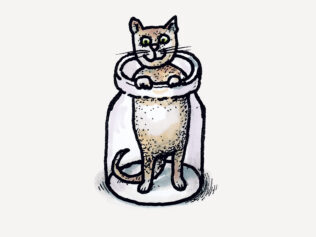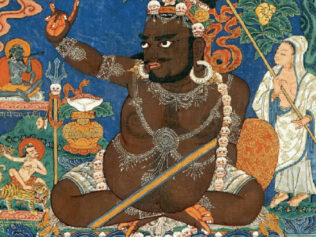
There were and still are among us people who raise compassion and empathy to the highest level. And that is love – unconditional love for one’s neighbour, a love to which one devotes their entire life.
DASHRATH MANJHI – the tamer of the mountain
A man’s despair after losing his beloved can push him either towards depravity or magnitude. In an otherwise quite fictitious legend, the Wallachian Prince Vlad III, following his wife’s suicide, is transformed into a monster drinking human blood – or at least this is how Francis Ford Coppola re-imagined, a century later, the legend of Dracula written down at the end of the 19th century by Bram Stoker. This is an example of depravity. Meanwhile, the great ruler of the Muslim empire in India, Shah Jahan erected one of the most beautiful buildings in the world: the Taj Mahal, the temple of love, in memory of his prematurely deceased beloved wife Mumtaz Mahal.
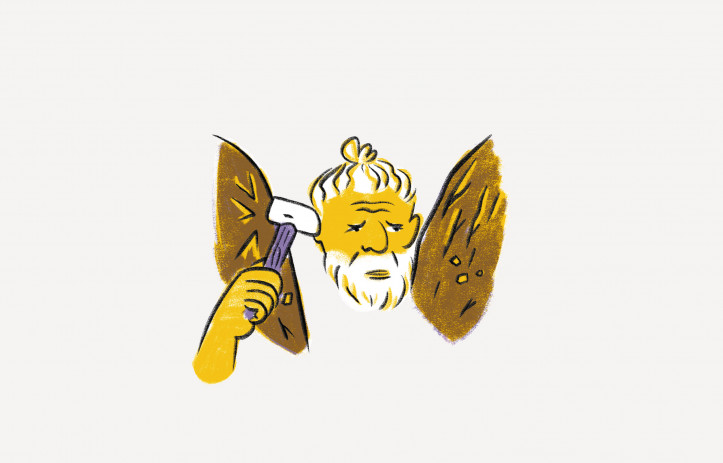
Much more recently, the story of the widower of Bihar in north-eastern India proves that one doesn’t need to be a ruler to move mountains for love. Dashrath Manjhi was a poor man born in the lowest caste. Following the passing of his beloved wife, he personally carved a tunnel in the mountain that caused her death… Literally, not figuratively.
The village where they lived was cut off from the outside world by the Gehlour hills. On that unlucky day, Falguni Devi was walking through the hills to bring dinner to her husband when she fell and injured herself. The nearest hospital was in a town on the other side of the mountain, and the only way to get there was to drive 60 kilometres around the mountain. She died before they got to the hospital.
Dashrath Manjhi sold three goats, and with the proceeds bought a hammer and a chisel. For the next 22 years, from 1960 to 1982 he carved through the ridge to create a path. The locals first took him for a lunatic, but after a few years began to bring him food and water, as well as new hammers and chisels. Dashrath singlehandedly created a 110-metre long path, in places as wide as 9 metres. The journey from the village to the nearest hospital, school and market was cut from 55 to 15 kilometres. Thanks to his feat, Manjhi was nicknamed ‘Mountain Man’. The authorities, who had stubbornly refused to help him throughout his years of tireless work, appreciated him only after his death.
Unlike the legend of Prince Dracula, the tale of Mountain Man is true. Although his achievement isn’t as appreciated as the Taj Mahal, the path of Dashratha Manjhi improves people’s lives, and can be called the longest and most difficult declaration of love.
MACIEJ ZIMIŃSKI – two million invisible hands
Antek was given the number 13128.
The boy’s life was not easy. Ever since his father had left, Antek and his mother had stayed at friends’ houses. The boy felt that he wasn’t as good as the other kids in the neighbourhood, and was treated accordingly. But one day Antek turned on the TV and heard the appeal to join the ‘Invisible Hand Club’. Help from the shadows and be like Zorro? What an adventure! So he wrote to the Girls and Boys’ Television, from whom he received a ticket and a special, ‘secret’ number, 13128. From that moment on, there was no time to lose.

Antek began collecting bottles and waste paper. With the money he earned from recycling them, he bought paper, envelopes and stamps, then hid in the basement so that no one would see him. Remember: the ‘invisible hands’ acted in secret. Antek wrote letters to the residents of Szymbark asking them to welcome children from the Children’s Home in Zagórz during their holidays. Not a single family refused – there were more willing families than children. It was one of the largest and most spectacular actions of the Invisible Hand. It was also the only one that was subsequently ‘declassified’ – the remaining ‘invisible hands’ acted completely anonymously.
Because it was not about impetus, let alone the publicity. The code of conduct was very simple – the ‘invisible hand’ is always ready to help others, will do anything that can be useful, and always acts in secret. They will mow the lawn, assemble a bike and offer it to a stranger, build a swing for younger children, bring water from the well to an older person, chop wood for the sick, tie hay into bundles, fix a bench in the park.
The creator of the Invisible Hand Club referred to the volunteers as his “beloved children”. He encouraged them to do well and promised them adventures, which he loved himself – otherwise he wouldn’t have brought the Zorro series to Polish television. The fascination of the Polish youth with the fearless hero in a black mask – and the ubiquitous letter ‘Z’ smeared with chalk on the street, painted with paint on the wall, and sometimes even carved with keys on the side of cars – disturbed the communist authorities.
Years later, however, it was revealed who invented and animated the Invisible Hand Club. It was Maciej Zimiński – a journalist, deputy head and then head of the TVP television network’s children and youth programmes editorial team, creator of Ekran z bratkiem [Screen], Teleferie and Friday with Pankracy, an author of children’s books. And, indeed, a member of the PZPR – the Polish Communist Party. It was Zimiński who caused millions of Polish ‘beloved children’ to become heroes, just like Zorro.
Zimiński’s biographer Maciej Wasilewski told the following anecdote: 15-year-old Maciek Zimiński is wandering about the ruins of post-war Warsaw. His attention is caught by a note on a tree saying that Reytana High School will admit students if they bring their own chair. Later that day, young people appeared in the school building, clearing its interior of rubble over the following weeks.
Wasilewski believes that the Invisible Hand was a repetition of this experience: it was born of defiance and attempts to reverse the trauma of World War II. It taught people how to live after Stalin and Hitler. Zimiński himself simply said that the Invisible Hand was about people looking at each other with kindness.
On 13th December 1981, the children’s TV show Teleranek didn’t air. It was also the day that the Invisible Hand Club ceased to exist. But during the 13 years of its existence, two million Polish children got a ticket with a secret number. There was really a good deed behind each of them.
JACQUE FRESCO – the engineer of a second paradise
First, he started to hate money. He was 13 years old when he saw first-hand how greed could drag millions down. The great crash on Wall Street erupted in the midst of 1920s America’s champagne dream – dreams of aeroplanes in the sky, fancy convertibles, feathers, pearls and shiny dresses fluttering on glitter covered dance floors, jazz music oozing from double basses, trumpets and pianos. On 24th October 1929, America woke up to poverty, millions of people out of work, an avalanche of suicides and starving children. How did this catastrophe happen? After all, man lived on a planet that could give him all the benefits necessary for a prosperous life – crops, plants, raw materials. This was one of the first and most important questions that Jacque Fresco asked himself in his more than 100-years-long life. As a result of the Great Crash, he became convinced that money is the greatest enemy of civilizational progress.
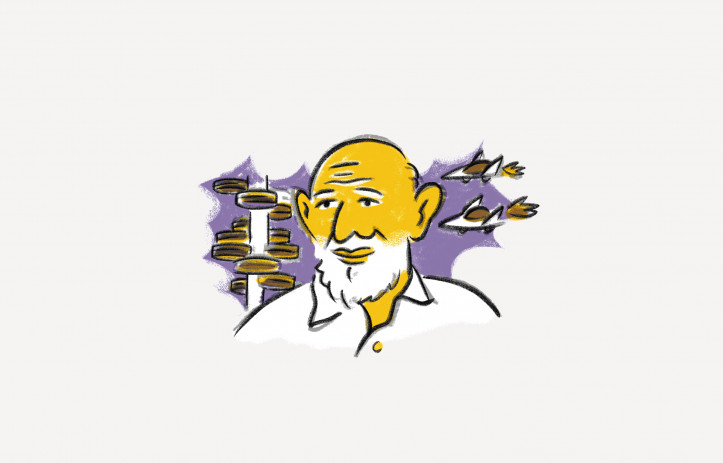
Then, he started to hate war; it broke out when he was 23 years old. The sight of brutality and the suffering of innocents shocked his young soul, but also planted the seed of optimism. If a man is able to do so much evil, it also means that he can create the same amount of good. Fresco believed that people are not born with hatred and greed in their hearts, but only learn them with time. He believed that it was sufficient to design a society that did not create incentives for evil. To this end, money should be eliminated and replaced by a simple economy in which computers would manage fair distribution. Clean air, water, agricultural land, education, health care, energy and food should be treated as a common good of humanity – no single country should claim the sole right to them.
He was a brilliant autodidact; he did not graduate from any university.
When he first came to Florida as a young boy, he caught venomous snakes in the Everglades wetlands and sold them to traveling circuses. He returned in the 1980s and, together with his life partner Roxanne Meadow, settled in a small town called Venus. One store, three churches, no bar. People driving rusty vans; living in trailers. There, on eight hectares, Jacque Fresco designed a fragment of paradise. He called it the Venus Project.
At first glance, the Venus Project looks like Hobbiton inhabited by the Jetsons. Birds sing in the lush foliage of trees and shrubs, a crocodile lazily dives into the water, and white futuristic houses shaped like hobbit huts are hiding among the all-encompassing greenery. This is a snapshot of his vision of the city of the future – completely self-sufficient in energy, with widely available organic food, smart homes, fast electric vehicles, and robots doing work for people. The Venus Project is also a part of the vision of an alternative society without money. People don’t claim more than the Earth can give them. The raw materials necessary for a prosperous life are divided fairly by computer algorithms.
Fresco once said that he was afraid of normal people. He had an infinite trust in science and its power. He believed that computers should replace governments, even democratic ones, because democracy is fiction. Money rules a world pervaded by corruption, and politics – in all its shapes and forms – only serves human greed. He thought that computers – unlike humans – had no ambition to control people.
He was a futurologist, architect, designer and a brilliant autodidact. Some say he was the Leonardo da Vinci of our time. He liked to call himself a social engineer. Was he naïve? He had no illusions that people would only begin to listen to him with the onset of disaster. When he died at 101 years old, his partner Roxanne Meadow said that those who are fooling themselves that our current lifestyle will not lead to disaster are the ones who are naïve.
Jacque Fresco believed that by drawing on our knowledge, science, and technology, we’d be able to build a second paradise within one decade.
PIA KLEMP – thank you, captain
How can you explain to a mother of a two-year-old dead child, whose body has been locked up in a freezer because no European port will let the ship in for several days, that the European Union received a Nobel Peace Prize? This is why Pia Klemp, the 35-year-old captain of a ship that rescues refugees in the Mediterranean Sea, warned the audience at the start of one of her public appearances that the next few minutes would be difficult for everyone in the room.
An inflatable dinghy should never go out into rough seas. No one should risk their lives like that, because no one deserves to lose their home. There should be no war, hunger, persecution and desperation at all. Who would not want to live in a better world? It is a pity that the one we created for ourselves allows all of the above. However, one can always take a stand against them, which is exactly what Pia Klemp has been doing for a number of years.
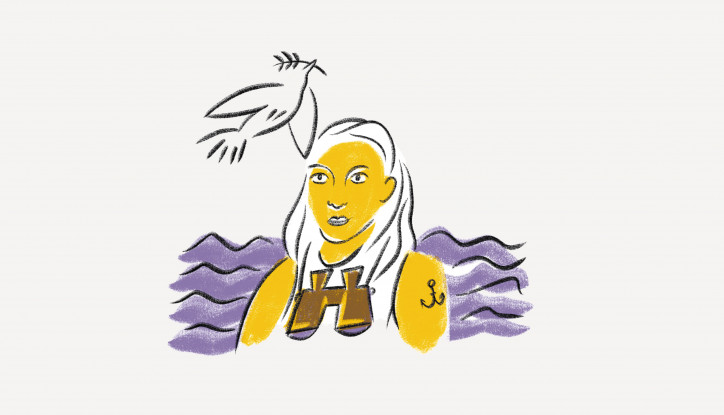
The 150 people who boarded a dinghy at dawn on 6th November 2017 and sailed from the Libyan coast to Europe were sentenced to death. And probably they all would have drowned, were it not for the group of volunteers from the blue Sea-Watch ship that Pia was the captain of.
They all would have drowned, because when the rough sea overturned the dinghy, neither the Libyan coastguard nor the European air patrols reacted. Even worse, when Sea-Watch volunteers began to throw lifeboats, the Libyans attempted to stop the rescue operation. That day, the lives of several dozen people were saved. Among them was the mother of the two-year-old. The child could not be rescued. Over the following few days, the ship wandered the seas, because no European port would allow it to enter. The boy’s body was placed in a freezer.
That was one of the many rescue operations carried out by Captain Klemp. Together with her crew, she was responsible for saving over a thousand lives. But this time, Klemp was charged with ‘participating in organizing illegal immigration’, and faces 20 years in prison and a fine of €15,000 for each of the lives she saved.
Do you remember the photo of the dead three-year-old Syrian boy in a red T-shirt, washed ashore in Turkey? That photograph was taken in the first days of September 2015. The emotions it roused were one of the last gestures proving that the fate of refugees is a humanitarian and not a political problem for Europe. The fate of Captain Klemp will determine what solidarity with those drowning at sea is for Europe – a good deed or a crime?
PADMAN – Mr Sanitary Pad
He took a ball, deflated it, and took out the inner tube. He went to the butcher and asked for goat’s blood. Then, he filled the inner tube with blood and replaced the valve with a thin tube. Having placed this bizarre device under his clothes, he became the first man in the world to have a period.
It was one of the most difficult stages of his work on creating a cheap, comfortable and effective sanitary pad. People in his village thought he had gone mad. Later, they began to call him a vampire and a pervert. Finally, a rumour went around that he had a sexually transmitted infection. First, his wife left him; and when she saw him washing off blood at a public tap, his mother followed in his wife’s footsteps.
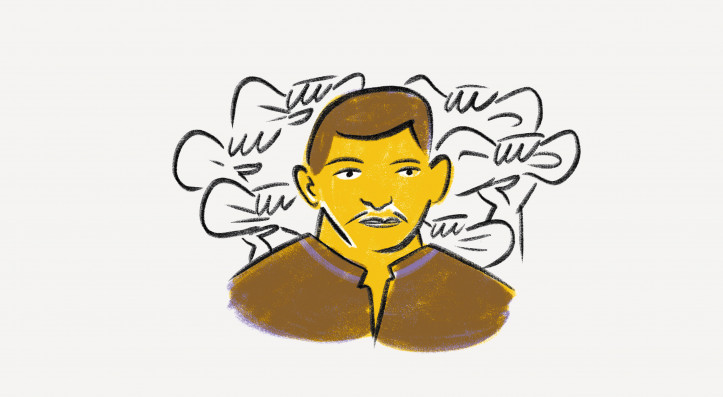
And yet he did all this out of his love for women. It all started when one day he saw his beloved wife hide a dirty, bloody rag from him. When he asked why she had it in her hand, she grunted that it wasn’t his business.
Menstruation is indeed something that concerns women – not men. But in a country like India, especially in the provinces, it is the patriarchy that stands guard over menstrual shame. Menstruation is taboo. As many as a quarter of girls stop going to school when they begin to menstruate. Girls from poor families cannot afford to buy sanitary pads. Only 12% of women in India use sanitary pads. 70% of reproductive system diseases result from a lack of proper hygiene during periods.
Arunachalam Muruganantham, later called Padman, has felt menstrual shame and exclusion on his own skin. First, when women refused to cooperate in testing the cotton pads he designed. Then, when he became the village lunatic and an apostate. And yet he did not give up. After difficult years of trial and error, he finally managed to create a perfect sanitary pad: hygienic, absorbent, comfortable and cheap.
Muruganantham knew that all his efforts would be wasted if his sanitary pads were not freely available to girls and women in the poor Indian provinces. That is why he created a project for cheap, mobile machines to produce the pads, which he then sold only to NGOs run by women. He refused the advances of large companies that wanted to buy his idea. His work was to serve women, and only they had the right to profit from it.
Padman gave women in India cheap sanitary pads, and also removed the curse of menstrual shame. In this way, the sanitary pad has become a symbol of the fight for women’s rights, which are violated every time a girl stops going to school, and therefore loses her chance for independence, because of her period.
This story also has another happy ending: Mr Padman has been reunited with his beloved wife.
PIETRO BARTOLO – an ordinary doctor from Lampedusa
Lampedusa. The gateway to Europe. Who can tell the number of times it has appeared in the prayers of refugees looking out to its shores from the Libyan coast. Life awaits the lucky ones who pass by Lampedusa. Those who fail must face death.
Pietro Bartolo was born on this island in the same year that the first and last king of Libya, Idris I, ascended the throne. It was 1951. No one could know that 18 years later, the then 9-year-old Muammar would lead a coup and, as Colonel Gaddafi, would rule the country for over four decades. After the overthrow of his bloody regime, the country would plunge into even worse chaos, and the smuggling of the desperate people arriving on the Libyan coast would become a business as profitable as it is cruel.
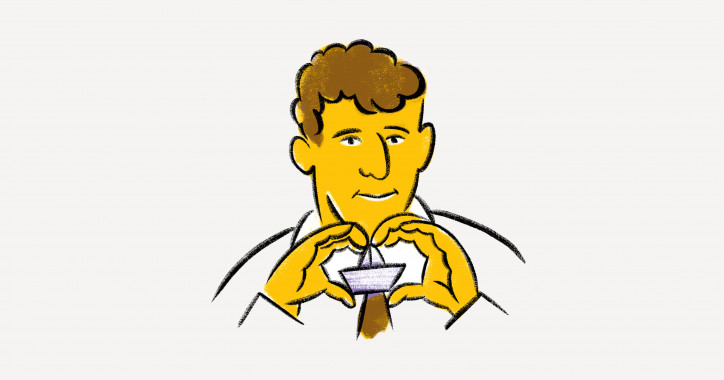
“I am a doctor from Lampedusa,” Pietro Bartolo introduces himself. So far, he has helped over 25,000 migrants. 3rd October 2013 is a day he will never forget. A boat with 500 migrants sank near the coast of Lampedusa. 368 people were killed, and there were plenty of children among the victims. Bartolo participated in the rescue operation, and then – when performing autopsies – realized how carefully parents prepared their children for this trip. Sunday best shoes, braided hair. Before departure, no one seemed to be aware of the risks, no one seemed to think about death; they thought only about life. To this day, the faces of these dead children haunt Bartolo’s dreams.
But a doctor working on Lampedusa doesn’t have to close his eyes to face nightmares. On the bodies of patients who came to Lampedusa after a stay in a migrant camp on the Libyan coast, Bartolo saw signs of rape, torture, burns on the skin, including the genitals, knife or razor blade cuts, and gunshot wounds. This is the unspoken price of the European politicians’ settlement with the Libyan government, which has contributed to a 70% decrease in migration to Europe.
In May 2019, in spite of the growing popularity of right-wing populist parties, fuelling anti-immigrant sentiment, Pietro Bartolo was elected a Member of the European Parliament.
ADRIANA POROWSKA – why do the homeless need a yacht?
When she first came to Warsaw, she was horrified by the sight of an elderly woman begging on the pavement among a crowd of indifferent people passing by. Where Adriana is from, that’s unthinkable. If someone in the countryside falls, they are never down for long, because in a moment someone will come and help them. At least, that’s how she remembered her childhood in Świętajny, a Masurian village near Szczytno, where she was born and raised. Her mother, the owner of the local store, knew all the customers. Her grandmother Czesława – whom she called her beloved Czesiulka – was a very religious woman, who never spoke about the Church but about God. She also remembered the sight of suffering from her childhood. Her younger brother Krystian was born with cerebral palsy and was predicted to never walk. Alongside the help of doctors and nurses, her tireless parents achieved a miracle. Today, Krystian has a wife, two children, and goes to work. At that moment, she understood that helping others was about more than just being honourable. Helping others is a power that makes people who have been written off stand up and go out into the world.
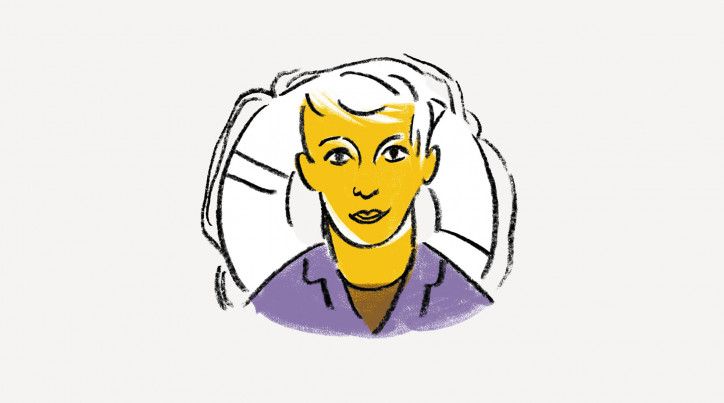
For the past decade, Adriana Porowska has been the head of the Kamilian Social Welfare Mission in Warsaw. Every day, she helps homeless people get back on their feet and go out into the world. Indeed, she wants to sail around the world with them. For this purpose, they have built a yacht. Adriana said in one interview that the ship changes the way we think about homeless people and helping them.
“As people, we are no different than other great people in this world. We have our passions and dreams, which we try to realize through baby steps,” said one of her mentees, Robert Świderski, during a meeting with Pope Francis. And the Holy Father responded: “What do the poor dream of? What do the homeless dream of? I do not know. But keep on dreaming. You dreamt that one day you would come to Rome, and that dream did indeed come true. Keep dreaming that the world can change. This is the seed that is born in your heart.”
Adriana calls her mentees “our homeless gentlemen”. She believes that it is enough to simply listen to their stories in order to see a hero in an invisible, dirty, smelly man. Because only a hero would bear the burden that each of them carries.
DOROTHY DAY – the holy communist
She understood compassion literally. Generosity, a beautiful attitude and noble ideas were not enough. Deeds had to follow views and faith. She had been like that since she was a child. To understand the feeling of hunger, she refused a good meal. In order to feel what poverty was, she slept in a cold attic.
She did not want to study; she preferred to write reports about the life of destitute New Yorkers. When the war broke out, she went to pacifist demonstrations with a group of suffragettes. She was outraged when she heard someone say that it was easier to protest than work, so she immediately got a job at a hospital.
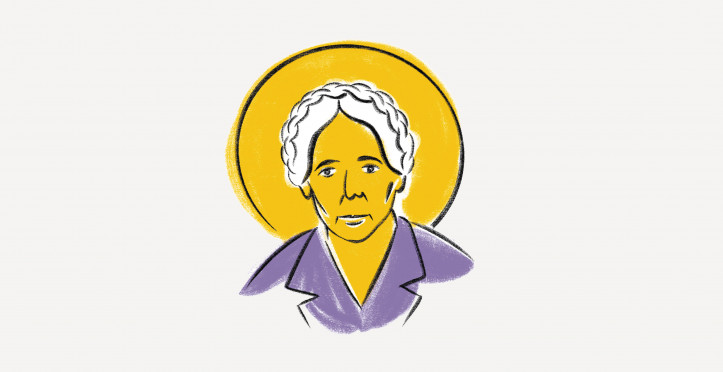
At that time, Dorothy Day was fascinated with Marxism, she was friends with prominent American communists, and worked with Max Eastman, the publisher of the socialist and feminist magazine The Masses. By day she fought for workers’ rights and a just, classless society; by night she read Dostoyevsky, Tolstoy and Gorky. She celebrated the outbreak of the October Revolution.
God appeared at the least expected moment when, after a failed affair, Dorothy had an abortion. In her autobiography, The Long Loneliness, she recalled sneaking into the back of the church of St. Joseph on Sixth Avenue and looking at people praying. Before she entered the Church for good, she had several other affairs, got married, divorced, and finally got pregnant again. She named her daughter Teresa. First she baptized the child, then herself.
Peter Maurin reminded her of Saint Francis. Together, they founded a monthly called The Catholic Worker and began helping the poor. Her house at 15th Street became a meeting and prayer space. In 1937, it provided the poor with 400 lunches per day. Later, similar guesthouses began to spring up throughout the US.
Her faith in God did not clash with her faith in a just, classless society. Until the end, Day never changed her political views. She used to say that she saw Jesus in every poor man who came to her asking for help. She treated her socialist beliefs as a complement to Catholicism, which was for her the fullest form of helping her neighbour.
Her beatification and canonization process has been going on for several years. She will probably be the first communist and feminist saint.
ESTER BLENDA – Pippi, all grown up
Ester Blenda captured Swedish journalism in a bold style – on a motorcycle and with a cigarette in her mouth. No one in Sweden had ever done undercover reportage before.
She chose an extremely difficult time. In 1914, only a really explosive story could break through the avalanche of political news written in the pre-war fever caused by the assassination of Archduke Franz Ferdinand. Blenda wrote a report about the lives of servants in the Swedish provinces. The text was published four days after the Sarajevo bombing and became a sensation.

23-year-old Ester changed her identity and got a job as a maid on a farm near Nyköping, a city on Sweden’s south-eastern coast. She wanted to understand why so many Swedish women emigrate to America. She spent a month undercover and shared all the hardships and humiliations experienced by Swedish servants. The work was monotonous and exhausting, from dawn till dusk, without time to rest, and with ridiculously low wages.
Later, she published a series of reports under the pseudonym Bansai in the daily newspaper, Svenska Dagbladet. They were soon published together – in the book A Maid Among Maids. It was not only a breakthrough in the art of reportage, but also an important voice in the discussion about women’s rights in Sweden, which contributed to the fact that they obtained electoral rights in 1919 – admittedly a year later than Polish women and as the last of the Scandinavian countries, but still only as the 20th country in the world.
Ester wore wide-legged trousers, smoked cigarettes and loved fast motorcycles. In 1922, she bought herself a third-class ticket, boarded a ship to New York, and got a job in the on-board kitchen. Later, in the US, she worked as a waitress and maid, as described in the book Amerikanskt. From the distant and wild corners of the world, she filed reports full of literary momentum, with the most famous – also published as a book – A Village in the Shadow of a Volcano, the result of her five-year stay in the Soviet Kamchatka.
Her biggest success, however, was a children’s book. The main character named Ann-Mari Lindelöf follows her dreams, is wise, resourceful, and does not bother thinking about marriage.
Who knows, if Pippi Langstrump had really lived, wouldn’t she grow up to be Ester Blenda?
Translated from the Polish by Joanna Figiel


